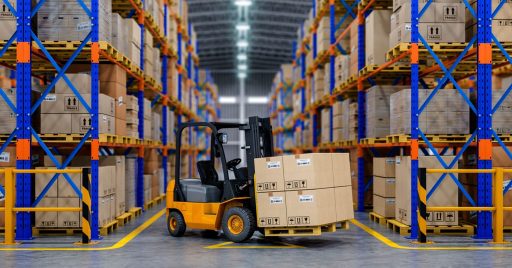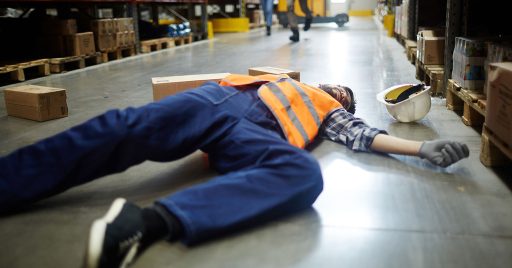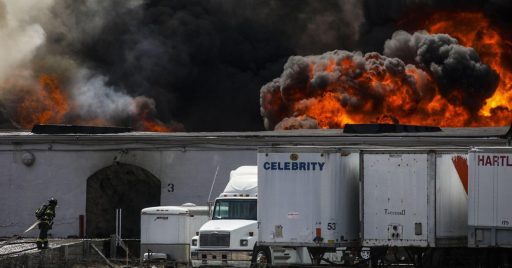Warehouse hazards can cause fatal and life-changing accidents. Employers must be aware of warehouse safety hazards and find solutions to eliminate them or mitigate the risks as much as possible.
Warehouse hazards like slips, trips, forklifts, falling objects cause severe injuries every year around the globe. In the UK, in February 2020, the GMB union claimed that the Health and Safety Executive (HSE), between 2016/17 and 2018/19, has received 622 injury reports from Amazon warehouse workers. The GMB has called for a parliamentary inquiry into Amazon as conditions for workers worsen.
Imagine walking down a storage aisle among multi-tier shelves full of goods while a forklift is moving behind. The image is scary enough, especially when the warehouse light is low. All the fear you feel could be real in a huge warehouse, mostly due to lacking a proper occupational health and safety management system.
Gaining knowledge is the first step to avoid workplace accidents and mitigate occupational health and safety hazards. There are some warehouse safety hazards that you must aware of then prevent them.
Table of content
1- Forklift: Fatal warehouse safety hazard
Only in the UK, forklift related-accidents cause every year about 1,300 workers hospitalized with severe injuries. Forklift accidents happen not only in warehouses but in every industry. In one case in 2006, a female worker lost her left leg due to a 2.5-tonne forklift overturned into the pedestrian area.
In warehouses, forklifts are widely used to move pallets and goods or to unloading trucks. To avoid forklift accidents, drivers must be professional and well experienced, and on the other hand, the warehouse must have sufficient segregation between forklifts and pedestrians.

2- Ergonomic: An ignorable pain that will be unbearable in the future.
Ergonomic related diseases are so common among warehouse workers. They usually lift or move boxes and goods. These activities must be avoided as much as possible; otherwise, workers must be aware of the ergonomic hazards to lift and move loads and do such activities properly.
Employers must take ergonomic hazards in warehouses seriously, train workers, and find solutions to alert them whenever bad working postures may occur.
Many workers require days away from work every year due to musculoskeletal disorders occurred by ergonomic hazards in their workplace. Therefore employers must be informed of these dangers and mitigate them.
3- Trips, Slips, and Falls: Usual and Fatal accidents.
Falling from ladders is one of the deadly warehouse safety hazards. Every year, about 300 deaths occur due to ladder-related injuries. Moreover, slips and trips are common in warehouses due to poor housekeeping.
In warehouses, falling from ladders often happens when workers use worn or damaged ladders or place the ladder in the wrong position, and since warehouses are usually vastly filled by goods, boxes, and equipment, poor housekeeping is regular, then slips and trips occur and cause serious injuries.

4- Falling objects: watch out!
According to the BLS, in 2017, in the US, 237 deaths occurred due to struck by a falling object or equipment. Improperly filled shelves in warehouses can result in dropped items and cause fatal accidents or serious injuries.
To prevent such accidents, workers need training on the safe handling and storage of materials. Employers should regularly conduct safety checks or find a solution to monitor the warehouse and its shelves.
All objects must be stacked evenly and straight while employees should interlock, block, and limit piles’ height. Workers should also remove one item at a time from shelving.
5- Fire: especially when there are flammable items in the warehouse.
Electrical, lighting and heating equipment can cause a fire in the warehouse, and they often have a much higher possibility of potential fuel lying around.
Every warehouse needs a fire protection plan based on the size and the stored objects, including a well-designed fire sprinkler system. Along with a properly designed sprinkler system, the building should be equipped with a detection system that includes smoke detectors and a fire alarm system.
A fire breaking out in the warehouse could be a real disaster for your business, so you must implement a fire assessment and consider all fire safety protection equipment and plans.
